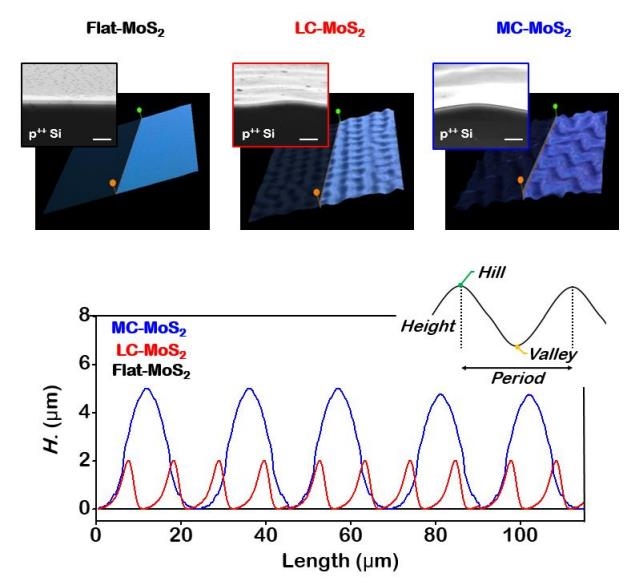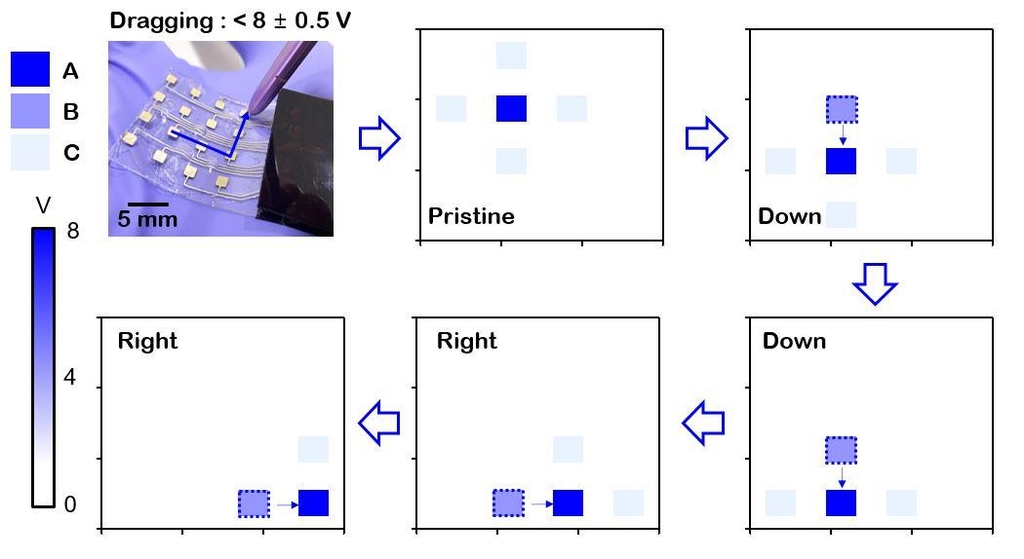


Dr. Lee Seung-gi of the Korea Institute of Science and Technology (KIST) Jeonbuk Bunwon Functional Composite Materials Research Center and Professor Chung Chang-kyu of the Department of New Materials Engineering at Chonbuk National University said on the 10th that they developed a Touch sensor that increased the efficiency of Triboelectric effect by more than 40% by forming a wrinkle structure in MoS2, a plane shape like paper sheet.
Ultrafine and low power sensors and devices that exchange signals and information anytime and anywhere are essential elements of the Internet of Things (IoT), but the problem is that wired or battery is difficult to continuously supply electricity to these electronic devices.
As a solution to this problem, the Triboelectric effect generator that induces Triboelectric effect in contact with materials like static electricity is attracting attention. However, in order to produce enough electricity, the general Triboelectric effect generator is large and heavy, so it is difficult to apply to wearable electronic devices.
In this study, the researchers controlled the characteristics of molybdenum disulfide (MoS2), a two-dimensional Samsung Electronics material that acts as an active layer in the Triboelectric effect generator, and changed the structure and increased the Triboelectric effect generation efficiency by 40%.
When molybdenum disulfide is synthesized, silicon/silicon oxide is used as a substrate, and a strong thermal treatment process used in the Samsung Electronics process is applied. By making silicon oxide crumpled in heat, molybthene disulfide synthesized on the silicon oxide is made into a wrinkled shape.
The molybdenum disulfide in the wrinkled form has a power generation of 2.25 μW (microwatt), which is 50% higher than the molybdenum disulfide (1.5 μW) in the flat state, and the stable Triboelectric effect output is maintained in 10,000 repeated experiments.
The team developed a lightweight, flexible, non-powerless Touch sensor that can be operated without a battery by applying wrinkled two-dimensional molybdenum disulfide to a Touch sensor used in a Touch pad or display.
The Touch sensor, which has increased power generation efficiency, is sensitive to stimuli and can recognize the Touch signal with less force without external power supply, the researchers explained.
"This study suggests a way to increase the efficiency of Triboelectric effect by combining with polymers, which will be the basis for the development of next-generation functional materials based on two-dimensional materials," said Lee Seung-gi. "If we increase the power generation, we will be able to use it as a self-generating power source to replace small batteries."
The findings were published in the latest issue of the Nano Energy international journal Nano.
Dr. KIST Lee Seung-gi "Increases Triboelectric effect generation efficiency by 50% with wrinkled two-dimensional nanomaterials."